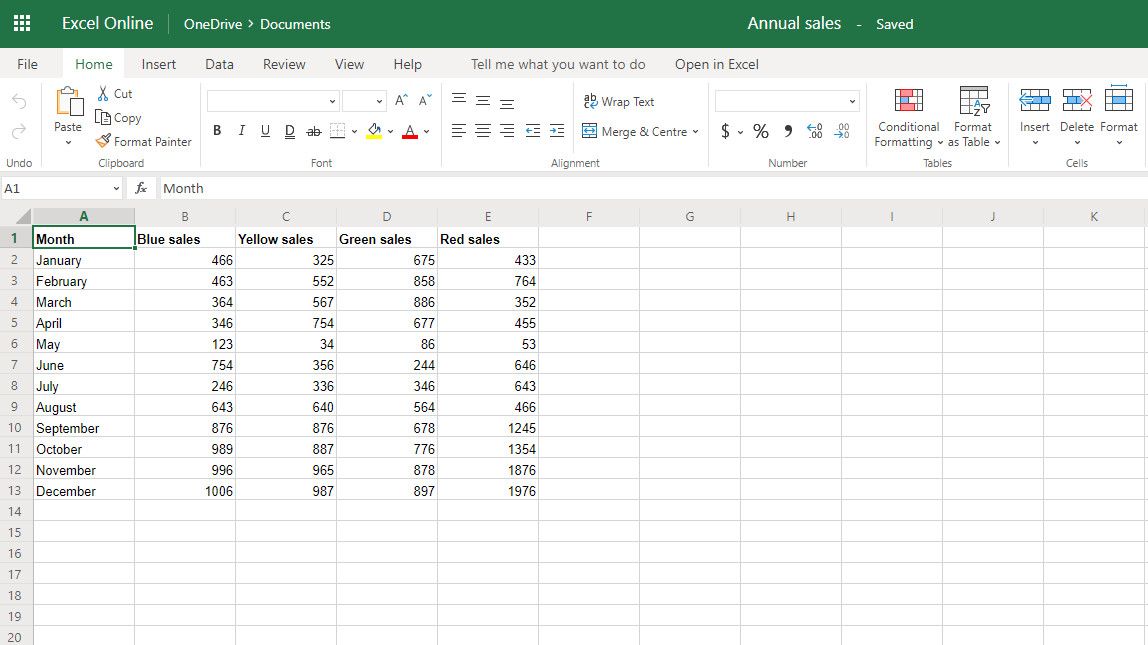

- #Creating a new line in microsoft excel for the mac how to
- #Creating a new line in microsoft excel for the mac for mac
- #Creating a new line in microsoft excel for the mac code

A WithEvents variable is just like any other object variable - you have to create an object and assign a reference to the object to the WithEvents variable. This happens because when you declare a variable, WithEvents, at design time, there is no object associated with it. Next, you have to create an instance of the class and then set the appevent object of the instance of the Class1 to Application. Private Sub appevent_WindowResize(ByVal Wb As Excel.Workbook, _
#Creating a new line in microsoft excel for the mac code
This will add the following to the Class1 (Code) module sheet: Private Sub appevent_WindowResize(ByVal Wb As Excel.Workbook, _Īdd code to the Class1 (Code) module sheet so that it appears as follows: Public WithEvents appevent As Application

In the Class1 (Code) module window, click the Procedure drop-down and then click WindowResize in the list. In the Class1 (Code) module window, click the Object drop-down and then click appevent in the list. The WithEvents keyword makes the appevent variable available in the Object drop-down in the Class1 (Code) module window. This will insert a module titled " - Class1 (Code)" into your project.Įnter the following line of code in the Class1 (Code) module: Public WithEvents appevent As Application In Microsoft Office Excel 2007, click Visual Basic in the Code group on the Developer tab.Ĭlick Class Module on the Insert menu. On the Tools menu, point to Macro, and then click Visual Basic Editor. Creating and Initiating the Event Handler The following example uses these steps to set up a global event handler that displays a message box whenever you resize any workbook window (the event firing the event handler). Create and run a procedure that starts the event handler.For example, you can create a procedure for the WindowResize, WorkbookOpen, or SheetActivate event of the object you declared using WithEvents. Create the procedure for the specific Application event.The WithEvents keyword can be used to create an object variable that responds to events triggered by an ActiveX object (such as the Application object).NOTE: WithEvents is valid only in a class module. Declare a variable for the Application object using the WithEvents keyword.To create an Application-level event handler, you must use the following basic steps:
#Creating a new line in microsoft excel for the mac how to
This article describes how to create an Application-level event handler and provides an example. Event handlers for the Application object are global, which means that as long as Microsoft Excel is open, the event handler will run when the appropriate event occurs, regardless of which workbook is active when the event occurs. If you want a particular event handler to run whenever a certain event is triggered, you can write an event handler for the Application object. For more information about this change, read this blog post. With the chart selected, click the Chart Design tab to do any of the following:Ĭlick Add Chart Element to modify details like the title, labels, and the legend.Ĭlick Quick Layout to choose from predefined sets of chart elements.Ĭlick one of the previews in the style gallery to change the layout or style.Ĭlick Switch Row/Column or Select Data to change the data view.Ĭlick Change Chart type to switch to a different kind of chart.Office 365 ProPlus is being renamed to Microsoft 365 Apps for enterprise. LessĮxploring charts in Excel and finding that the one you pick isn’t working well for your data is a thing of the past! Try the Recommended Charts command on the Insert tab to quickly create a chart that’s just right for your data.Ĭlick the Insert tab, and then do one of the following:Ĭlick Recommended Charts and select the chart type you want.Ĭlick a specific chart type and select the style you want.
#Creating a new line in microsoft excel for the mac for mac
Excel for Microsoft 365 for Mac Excel 2021 for Mac Excel 2019 for Mac Excel 2016 for Mac More.


 0 kommentar(er)
0 kommentar(er)
